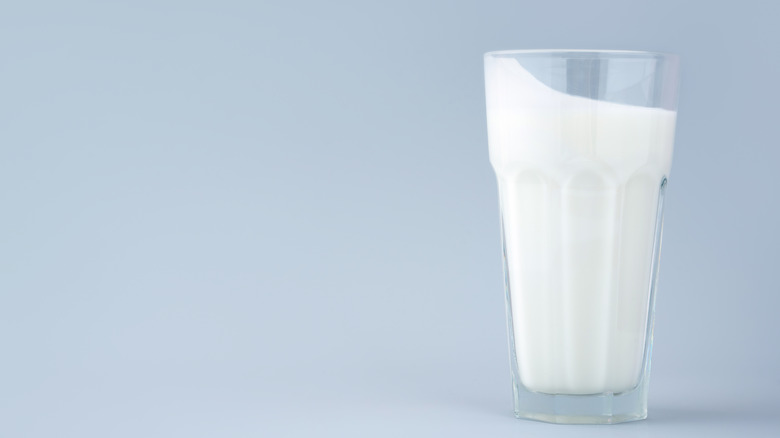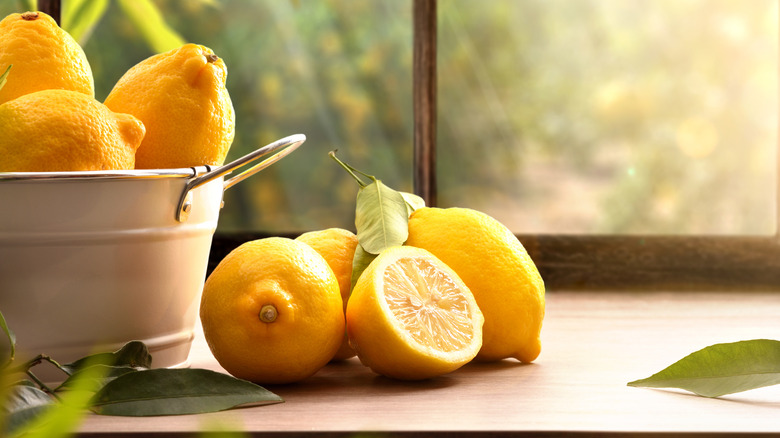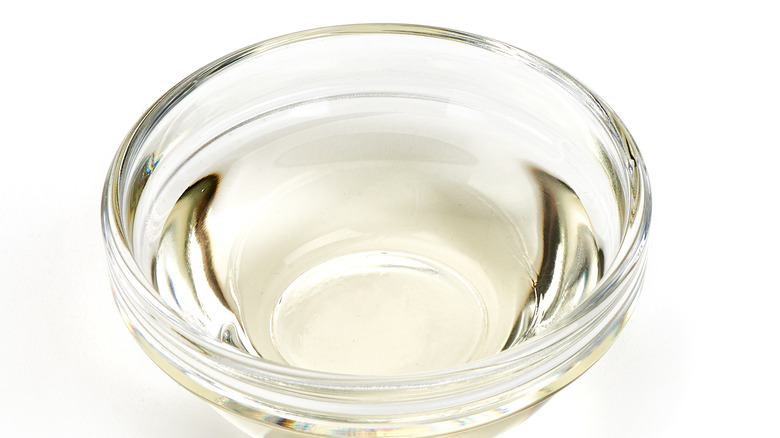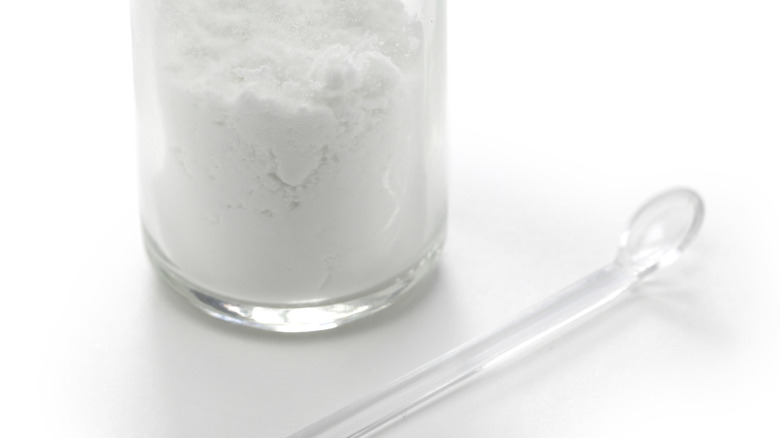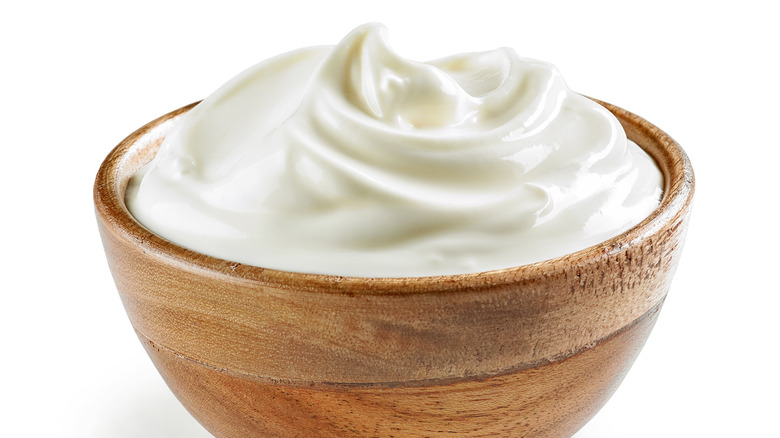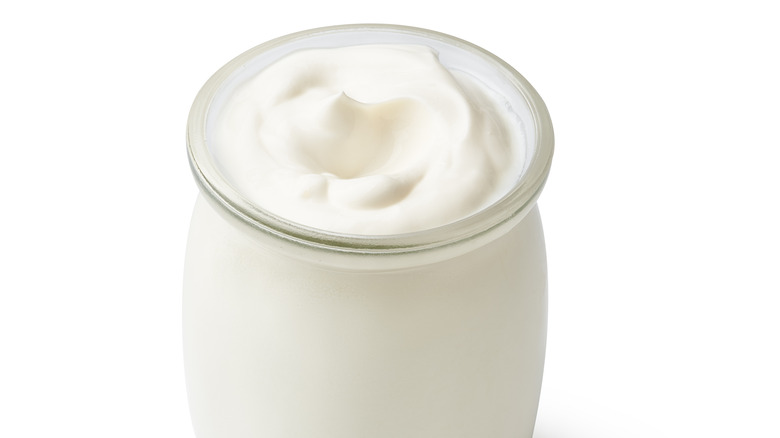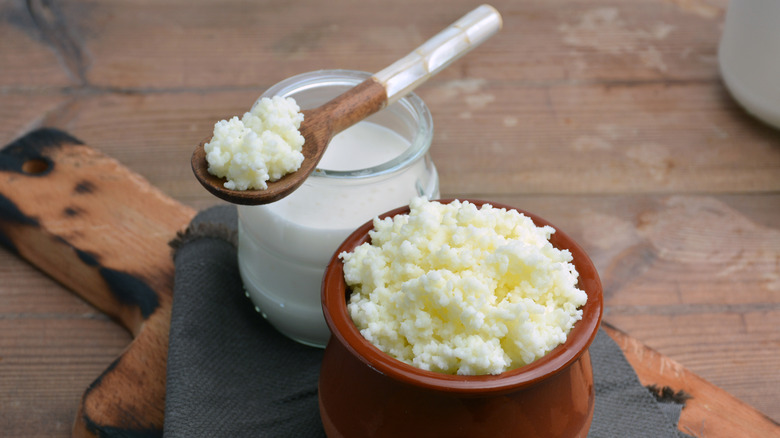6 Best Substitutes For Buttermilk
People neither born nor bred in the south probably first became acquainted with buttermilk either in a narrative about pre-20th century life, or while eating biscuits or pancakes. But buttermilk itself has been around for a really long time and was, until the 20th century, the thin, pale by-product of the butter-making process (via Slate).
While we consume plenty of butter today, it's no longer the main source of our buttermilk. Rather, the buttermilk we find in the supermarket today is mostly made with low-fat milk, to which lactic acid bacteria is added. Cooks Illustrated says carrageenan, starch, and salt can also be added to this butter and lactic acid mixture, making it thicker.
Buttermilk is prized as an ingredient because of the way it reacts with other ingredients. It adds lift to a wide range of treats, from waffles and pancakes to cakes and muffins. Its sour, acidic nature also makes it a gift to cooks looking to make really tender chicken or pork. It's even a salad dressing ingredient, found in favorites like ranch. With all these unique uses, what do we do when we can't get our hands on any buttermilk? These substitutions are your answer.
Lemon juice and milk
The quickest way to create a buttermilk substitute using items you have in your pantry is to make a mixture with a set proportion of milk and lemon juice. While some recipes call for the mixture to sit for ten minutes, Cooks Illustrated says doing that merely makes the milk curdle, noting that the waiting time doesn't actually thicken the liquid. Since what you're after is the acid that the citrus juice provides rather than a texture change, testers say it's perfectly fine to use the lemon juice-and-milk mixture immediately after it is made.
To make what Cooks Illustrated calls "clabbered milk," add a tablespoon of lemon juice to a cup of milk, then stir. To make a vegan version of this buttermilk substitute, Healthline suggests replacing dairy milk with an equal amount of soy milk. It's as easy as that!
Vinegar and milk
If you need a buttermilk substitute that doesn't taste or smell quite so lemony — or if you've run out of lemons — another good substitute for buttermilk is a mixture of milk and vinegar. Healthline says any type of vinegar is acceptable for this combination, but if you're looking for a buttermilk substitute that will neither add a new flavor nor overpower your dish, using distilled white vinegar would be the way to go. The proportion of milk to vinegar is about the same as the milk and lemon juice option — just combine a cup of milk and a tablespoon of vinegar and stir. As with the milk and lemon juice combo, leaving it to sit is an option that is often mentioned, but is also unnecessary.
Healthline also suggests that a tablespoon of vinegar added to a cup of soy milk will leave you with a vegan version of this substitute.
Cream of tartar and milk
Not to be confused with tartar sauce, cream of tartar is a white powder with a chemical name: potassium bitartrate. It's commonly is used at home to keep your whipped egg whites tall, to keep boiling sugar from forming crystals when you make candy, or as a rising agent for baked goods, and in conjunction with baking soda. And in case you were wondering, there is no cream of tartar in tartar sauce. Unlike other buttermilk substitutions, Cooks Illustrated doesn't recommend you add cream of tartar powder directly to milk, which results in a clumpy mess. Instead, add the cream of tartar to your dry ingredients and the milk to your wet ingredients.
To use a mixture of cream of tartar and milk to replace buttermilk, use 1 ½ teaspoons of cream of tartar for every cup of milk. For people who don't consume dairy milk, Healthline says cream of tartar can also be used with soy milk; just add 1 ¾ teaspoon of it per cup of soy milk.
Sour cream
If you happen to have sour cream in your refrigerator, you'll be pleased to know that the topping typically used in your favorite burritos and quesadillas is also a perfectly acceptable substitute for buttermilk. This is because, as Healthline points out, lactic acid is used to make both sour cream and buttermilk. But sour cream has a much thicker texture, so you're going to need to thin the ingredient out with water or milk.
To get the texture that you need, you'll want to combine ¾ cup of sour cream with ¼ cup of milk or water, and then stir until you have a light yet creamy mixture with a uniform texture. If you decide to use vegan sour cream for this substitution, the ratio is a little different, but even easier to remember: ½ cup of vegan sour cream to a ½ cup of water.
Yogurt
This is maybe one of the last things that comes to mind as we're going through our refrigerators for a buttermilk substitute, but as it turns out, traditional plain yogurt will do the trick. Like cultured buttermilk and sour cream, yogurt is also the result of exposing milk to bacteria. As Inside the Mill, Bob's Red Mill's baking blog, points out, yogurt's natural acidity is pretty close to that of buttermilk, so you get essentially the same effect when using it in place of buttermilk.
The blog recommends using 1 cup of yogurt to replace an equal amount of buttermilk. If this ratio is too thick, add a bit of water or milk to thin things out. But Healthline, which also recommends the use of yogurt as a buttermilk substitute, recommends mixing ¾ cup of yogurt with ¼ cup of water or milk to get the consistency you are looking for.
Kefir
Kefir and yogurt are cousins, but the former is a drink. Kefir is fermented, and it's even got a bit of fizz to it, thanks to the presence of carbon dioxide. Other than getting the benefits of consuming milk, kefir also has probiotics which can help with your digestion.
While kefir isn't something the average person has in their refrigerator, you might want to consider keeping some on hand for when you run out of buttermilk. There are a lot of reasons for this, as Bob's Red Mill points out. It has the same fat content as buttermilk, its acidity level helps dough and batter to rise, and its sourness will give your baked goods the same tang that buttermilk does.
To make things even easier, the site recommends a 1 to 1 ratio when you sub out kefir for buttermilk. But like with other substitutes, you can always add some water or milk if it's too thick.
